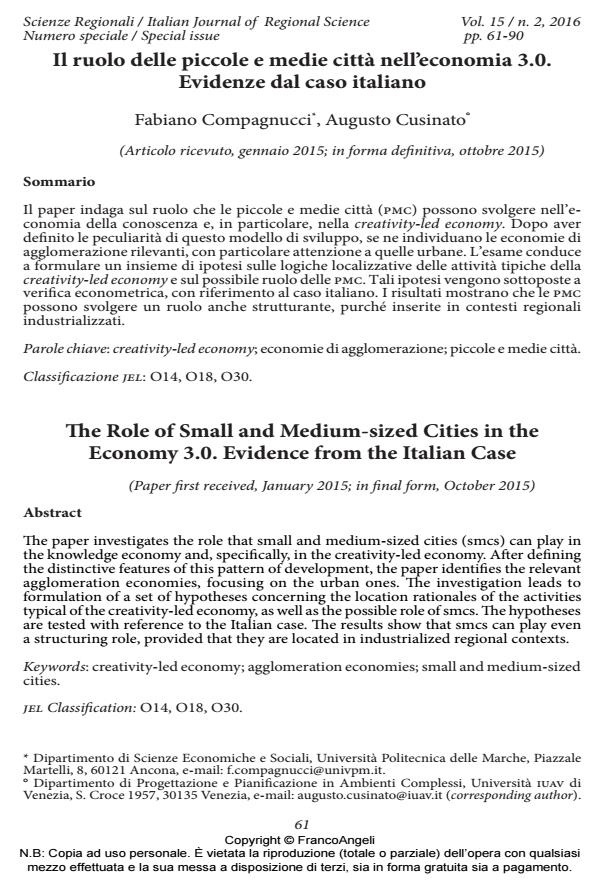The Role of Small and Medium-sized Cities in the Economy 3.0. Evidence from the Italian Case
Journal title SCIENZE REGIONALI
Author/s Fabiano Compagnucci, Augusto Cusinato
Publishing Year 2016 Issue 2016/2
Language Italian Pages 30 P. 61-90 File size 694 KB
DOI 10.3280/SCRE2016-002004
DOI is like a bar code for intellectual property: to have more infomation
click here
Below, you can see the article first page
If you want to buy this article in PDF format, you can do it, following the instructions to buy download credits

FrancoAngeli is member of Publishers International Linking Association, Inc (PILA), a not-for-profit association which run the CrossRef service enabling links to and from online scholarly content.
The paper investigates the role that small and medium-sized cities (smcs) can play in the knowledge economy and, specifically, in the creativity-led economy. After defining the distinctive features of this pattern of development, the paper identifies the relevant agglomeration economies, focusing on the urban ones. The investigation leads to formulation of a set of hypotheses concerning the location rationales of the activities typical of the creativity-led economy, as well as the possible role of smcs. The hypotheses are tested with reference to the Italian case. The results show that smcs can play even a structuring role, provided that they are located in industrialized regional contexts.
Keywords: Creativity-led economy; agglomeration economies; small and medium-sized cities
Jel codes: O14, O18, O30
- Creativity and local economic development: The role of synergy among different talents Silvia Cerisola, in Papers in Regional Science /2018 pp.199
DOI: 10.1111/pirs.12254 - A comment on Scott and Storper's ‘The nature of cities: The scope and limits of urban theory’ Augusto Cusinato, in Papers in Regional Science /2016 pp.895
DOI: 10.1111/pirs.12259 - Knowledge-creating Milieus in Europe Augusto Cusinato, Andreas Philippopoulos-Mihalopoulos, pp.359 (ISBN:978-3-642-45172-0)
Fabiano Compagnucci, Augusto Cusinato, Il ruolo delle piccole e medie città nell’economia 3.0. Evidenze dal caso italiano in "SCIENZE REGIONALI " 2/2016, pp 61-90, DOI: 10.3280/SCRE2016-002004